The following is from a work-in-progress about the history of Fullerton. You can support my ongoing research and writing on Patreon.
There are two shows on Netflix right now called “Selling Sunset” and “Selling the OC” which follow the activities and drama of the Oppenheim Group as they sell upscale SoCal real estate. The two owners of the company are Jason and Brett Oppenheim, who are the great great grandsons of Jacob Stern, who had a unique connection to Fullerton.
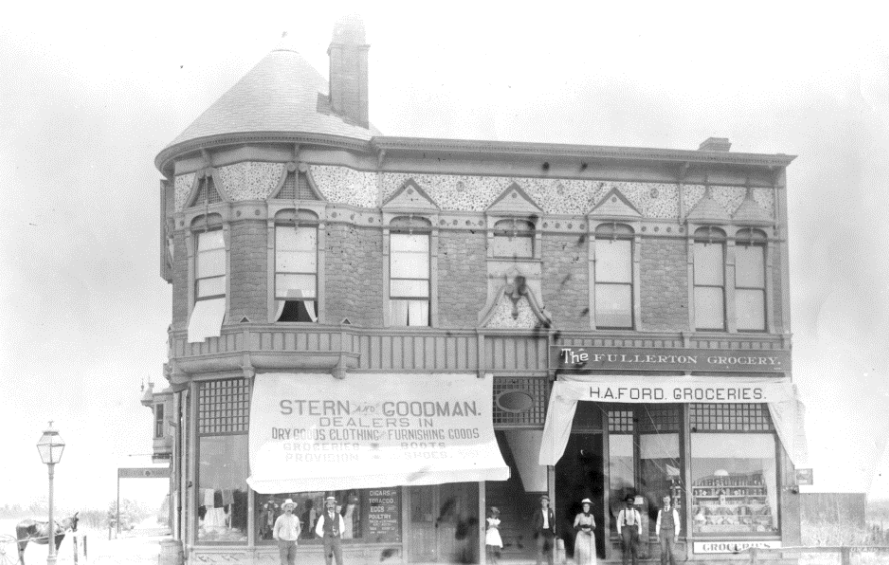
Stern opened the Stern & Goodman mercantile company in 1889, one of the first businesses in town, and he became a major landowner in southern California, including Hollywood–at one time owning over 20,000 acres of prime real estate. It was on the Stern property near Hollywood and Vine that the first feature length motion picture was filmed by Cecil B. DeMille for what would become Paramount Studios.
The following bio of Jacob Stern is taken from John McGroarty’s book From the Mountains to the Sea: a History of Los Angeles, the journal Western States Jewish History (Vol XV, No. 4 July 1983, and Vol. XLIV, No. ¾ Spring/Summer 2012,), and the web site Hollywood Heritage.
Jacob Stern was born in Saxony, Germany, September 20, 1859, to Marcus and Rosetta (Goodman) Stern. His father was a dealer in hops and cattle. Until age 20, Stern worked on the family farm.
In 1884 he emigrated to the United States, landing first in New York, and then Cleveland, Ohio. For about five years he worked for the wholesale clothing house of Lehman, Richman & Company at Cleveland.
In 1889, he came to the newly-formed town of Fullerton, California with his cousin Joseph Goodman, and they opened the Stern & Goodman general store at the southeast corner of Spadra (now Harbor) and Commonwealth Avenue.
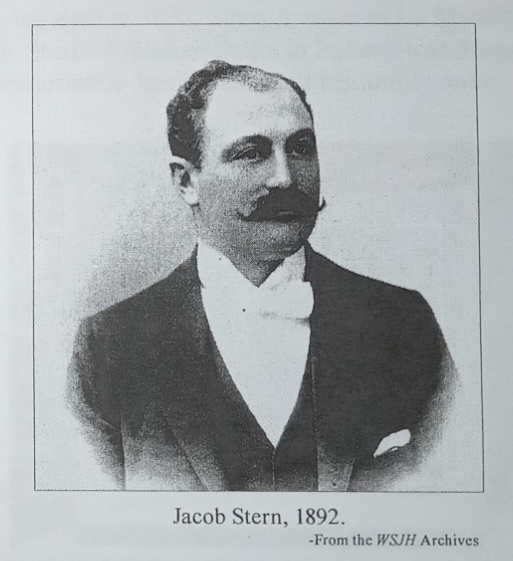
They sold clothing, furniture, farm equipment, livestock, wagons, carriages, and more. Eventually the store expanded into a chain of five outlets: Fullerton, Olinda, Yorba Linda, Placentia, and Brea. It was one of California’s first chain stores.
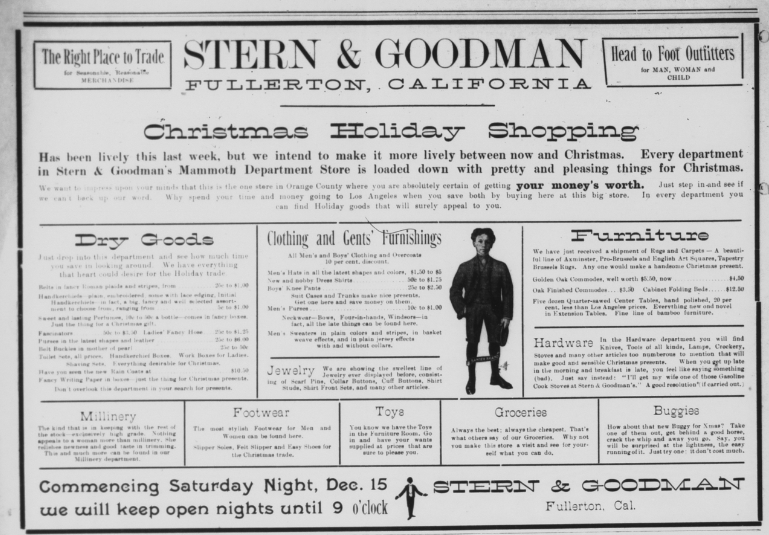
In addition to being a retailer, the store operated sort of like a bank for farmers. According to Western States Jewish History: “Stern and Goodman loaned the Orange County farmers seed and farm supplies each year, settling up their accounts when the crops came in. In times of crop failure, the farmers were carried for another year or longer.”
It was estimated that three-fourths of the hay and grain business of Orange County was handled by Stern.
In 1891 in Los Angeles Stern married Sarah Laventhal, daughter of Elias Laventhal, a pioneer settler in Los Angeles County.
Sarah’s father Elias Laventhal had arrived in Los Angeles in 1854 and “was one of a group of men who organized the Hebrew Benevolent Society of Los Angeles, the first Jewish group of what was to become the second largest Jewish community in America.” (WSJH)
The Sterns had four children: Harold, Elza, Helen, and Eugene. For a number of years the family lived in Fullerton, but in 1904, they bought the large Colonel Northam home in Hollywood, at the corner of Vine Street and Hollywood Boulevard which McGroarty described as “one of the show places of the beautiful Hollywood District.”
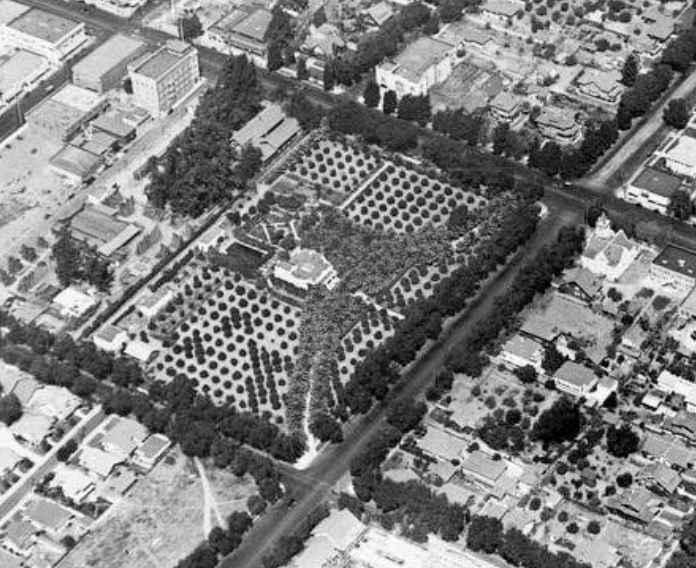
Below are some postcards of the Stern residence in Hollywood, called Casa de Las Palmas, courtesy of Hollywood Heritage:
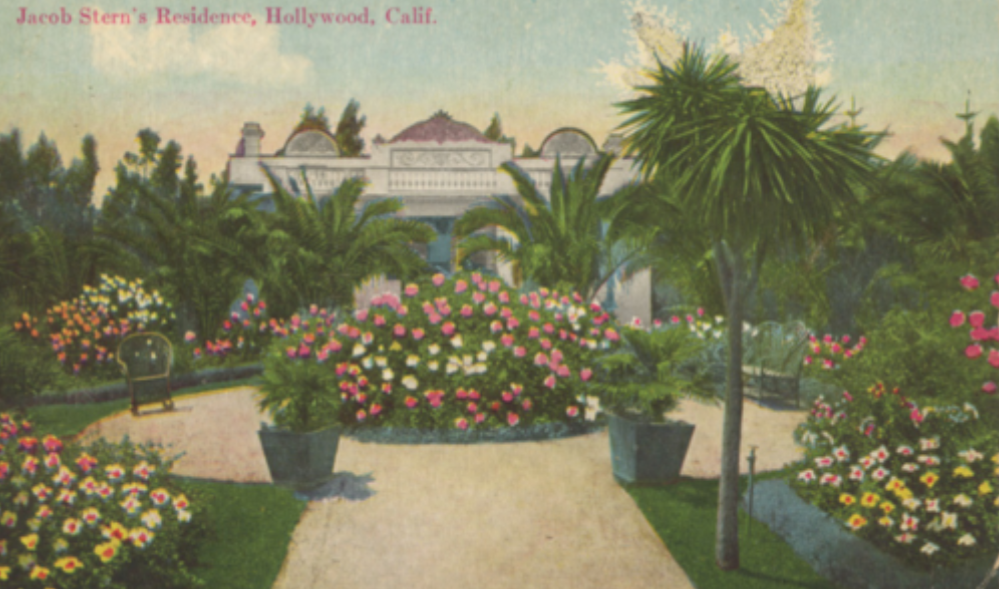
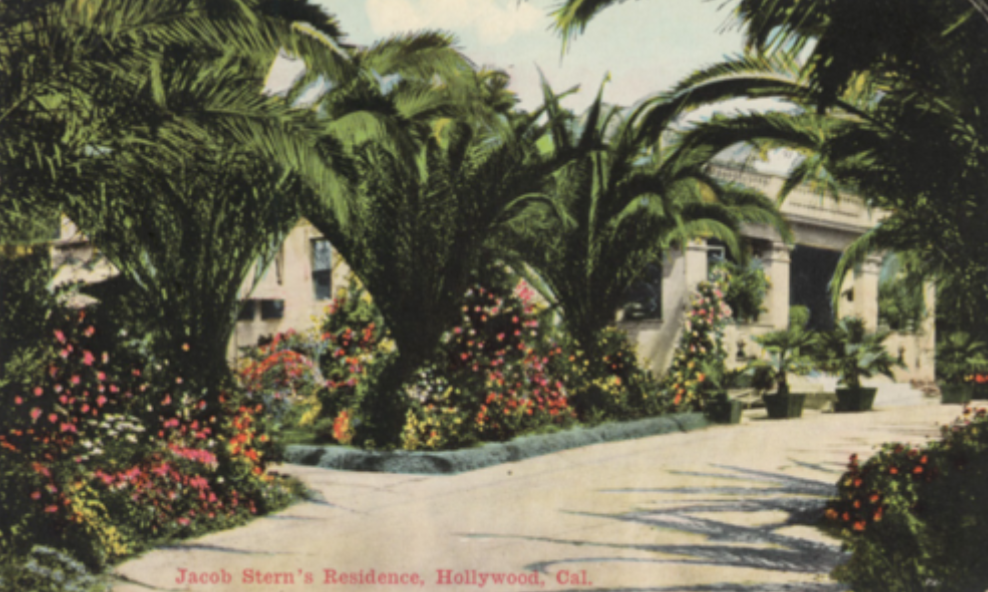

In 1904 Mr. Stern opened his real estate office in the Pacific Electric Building in Los Angeles.
The Stern Realty Company incorporated in 1911 and specialized in residential, agricultural, and oil lands mostly in Los Angeles and Orange County.

Stern eventually became one of the largest landowners and wealthiest businessmen in southern California, owning more than 20,000 acres of land.
“The great extent of his present interests cannot be confined to any one building or even a single county of California,” McGroarty wrote in 1921. “It is said that Mr. Stern owns land in nearly every county of California.”
Stern & Goodman sold their stock of goods at their Fullerton store in 1918, but still retained ownership of the block.
In 1912, Stern leased two-acres of his property at Vine and Selma, which contained his barn, to the Lasky Feature Play Company, which became Paramount Studios.
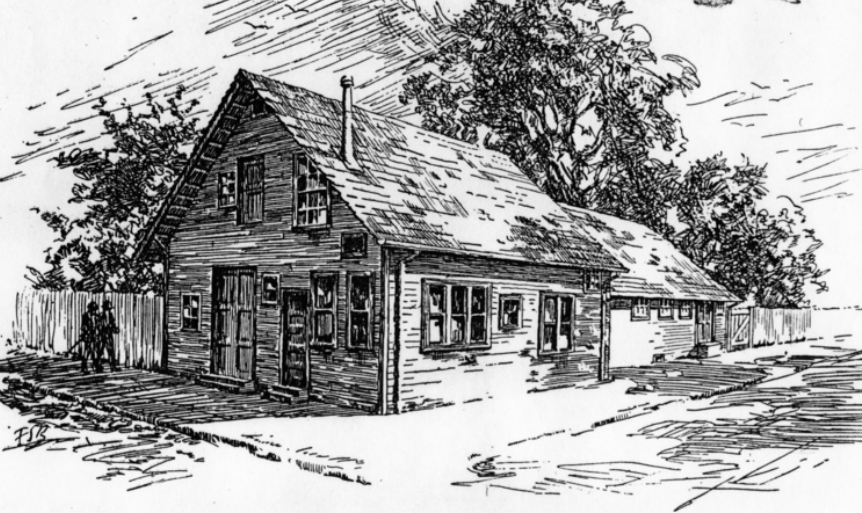
According to Western States Jewish History, “It was in the Stern barn that Cecil B. DeMille, Samuel Goldwyn and Jesse Lasky made the first feature-length motion picture, ‘The Sqaw Man.’ The budget for that film, made in 1913, was $15,000…In December, 1956, a California Registered Landmark plaque, No. 554, was placed on the barn, titled ‘Hollywood’s First Major Film Company Studio.’”
In 1925, with southern California growing rapidly, Stern built the Hollywood Plaza Hotel on his property.
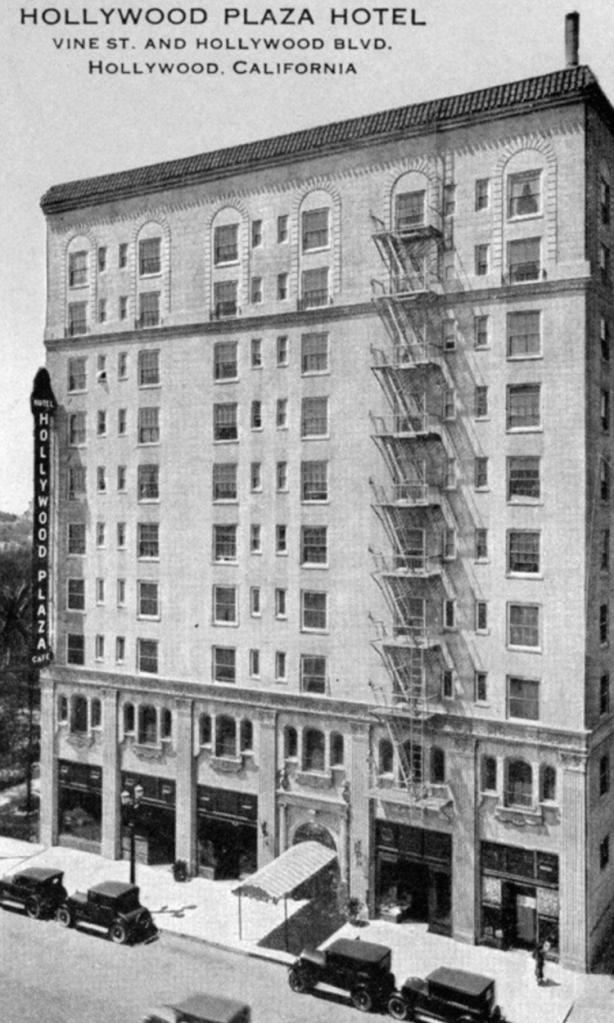
According to Hollywood Heritage: “In the early years of Hollywood, the hotel became the home of many stars looking for a place to live while filming or performing on radio at one of the nearby studios. Legendary stars like Marilyn Monroe, Doris Day, Jackie Gleason, Betty Davis, and even Frank Sinatra all stayed at or frequented the hotel.”
Stern lived at his home on Hollywood and Vine until 1930, when he moved to the Holmby Hills area of Los Angeles.
Jacob Stern died in 1934, just a year after his wife passed.
Many streets and even some monuments still bear his name, such as Stern Avenue in La Mirada, Stern Avenue in Van Nuys, Stern-Goodman Street in Fullerton and Stern’s Park in Los Alamitos.
Perhaps most notably, the barn which Stern leased for the first motion picture has since become the Hollywood Heritage Museum, and is located at 2100 N Highland Ave, Los Angeles, across from the Hollywood Bowl. According to Wikipedia, “The Museum features archival photographs from the silent era of motion pictures, movie props, historic documents and other movie related memorabilia. Also featured are historic photographs and postcards of the streets, buildings and residences of Hollywood during its golden age. Special events entitled ‘Evenings at the Barn’ are open to the public and regularly programmed including speakers, screenings and/or slideshows with a focus toward Hollywood’s early history.”

Leave a comment